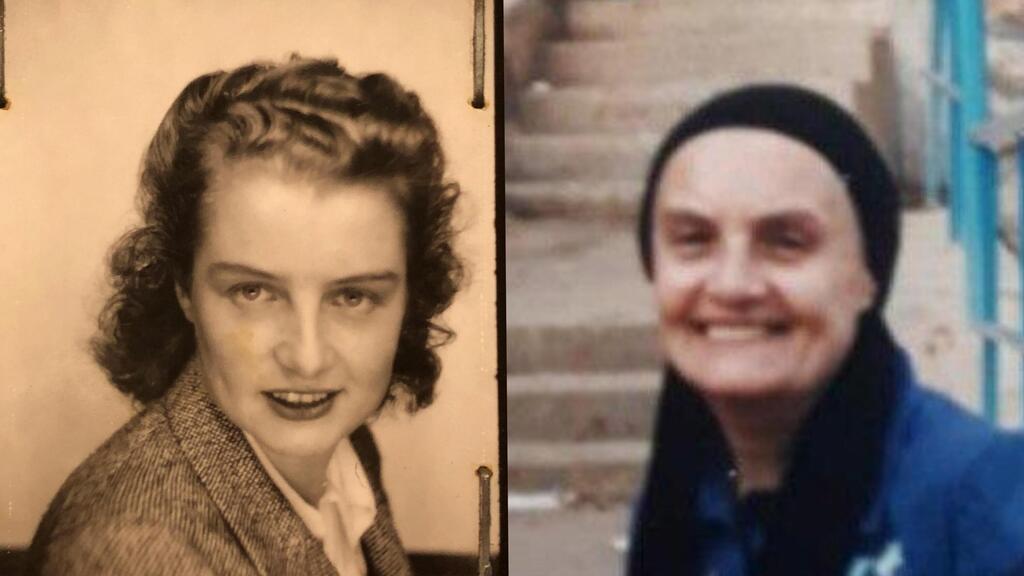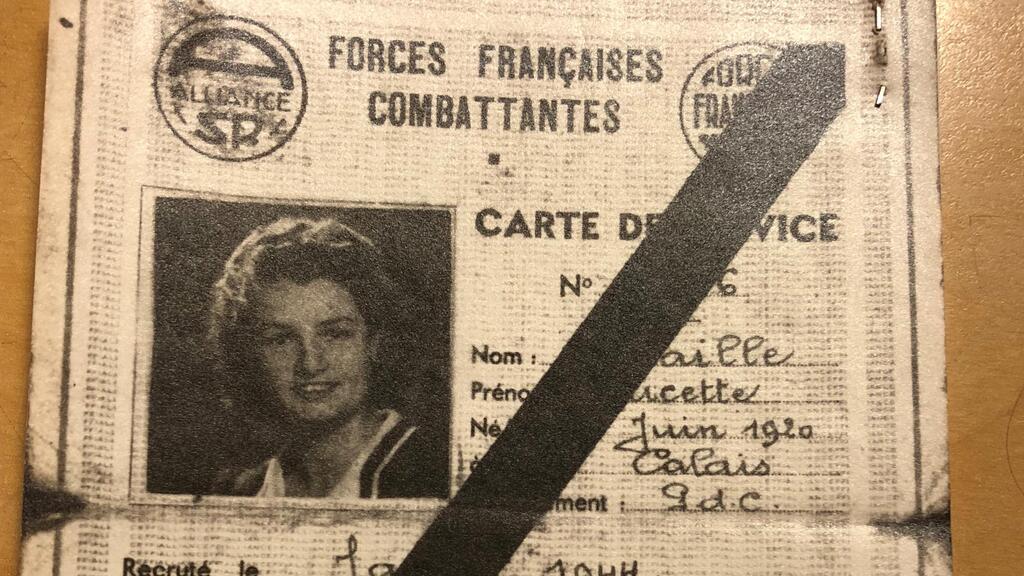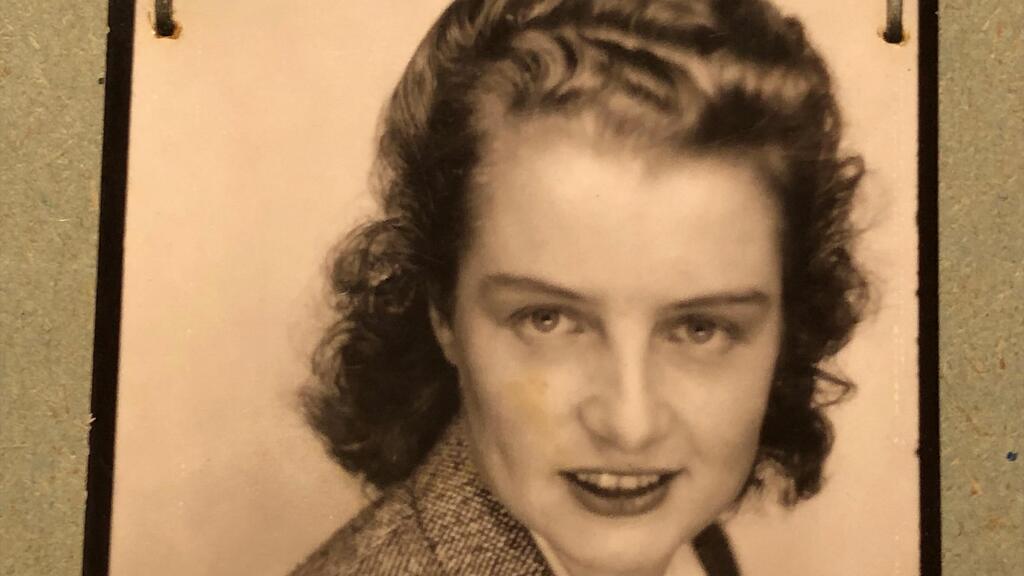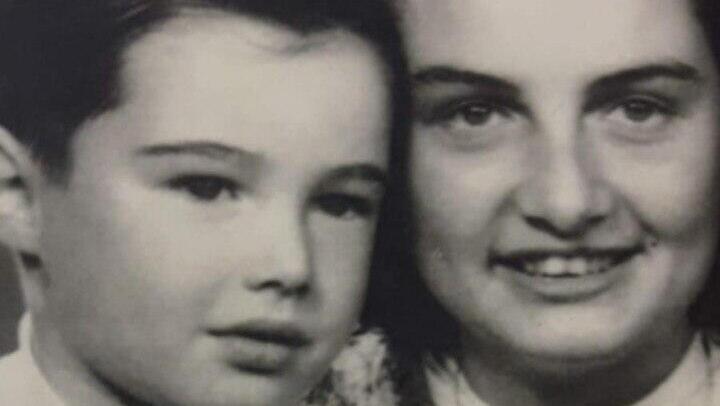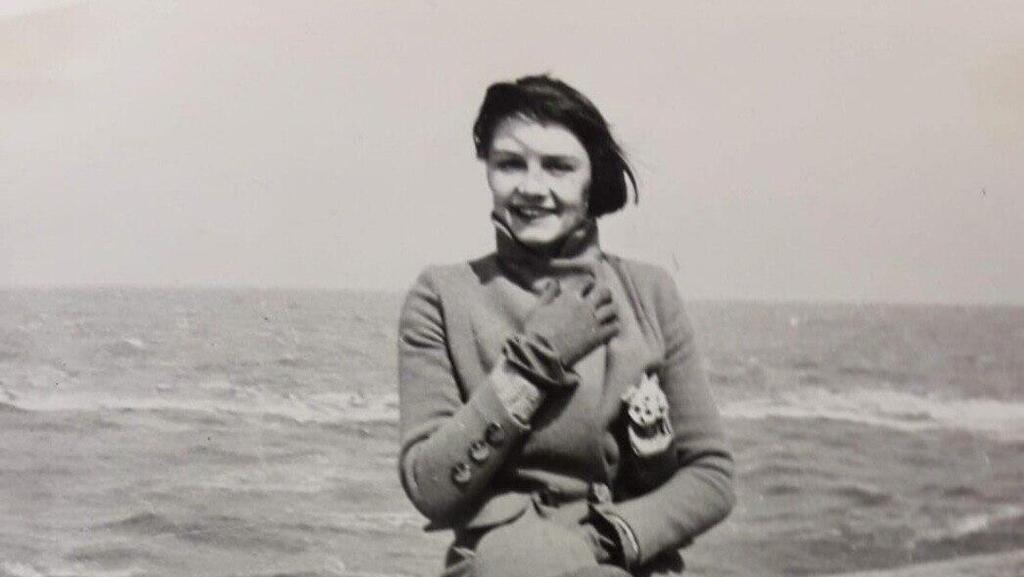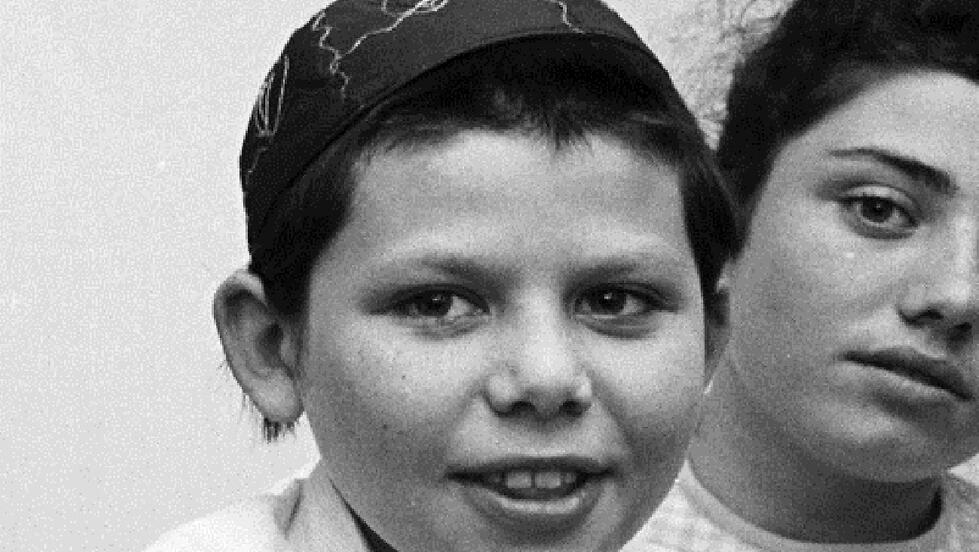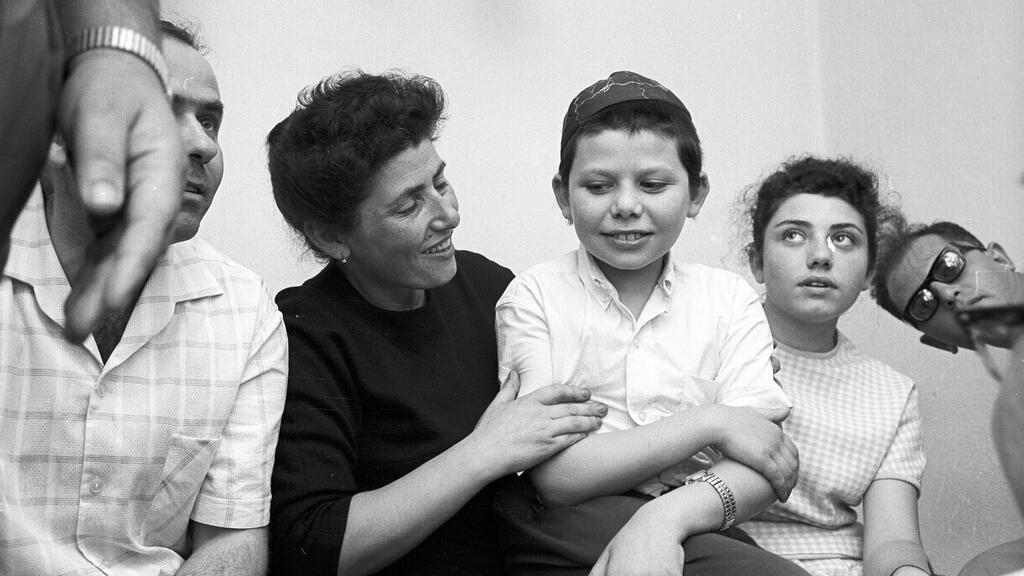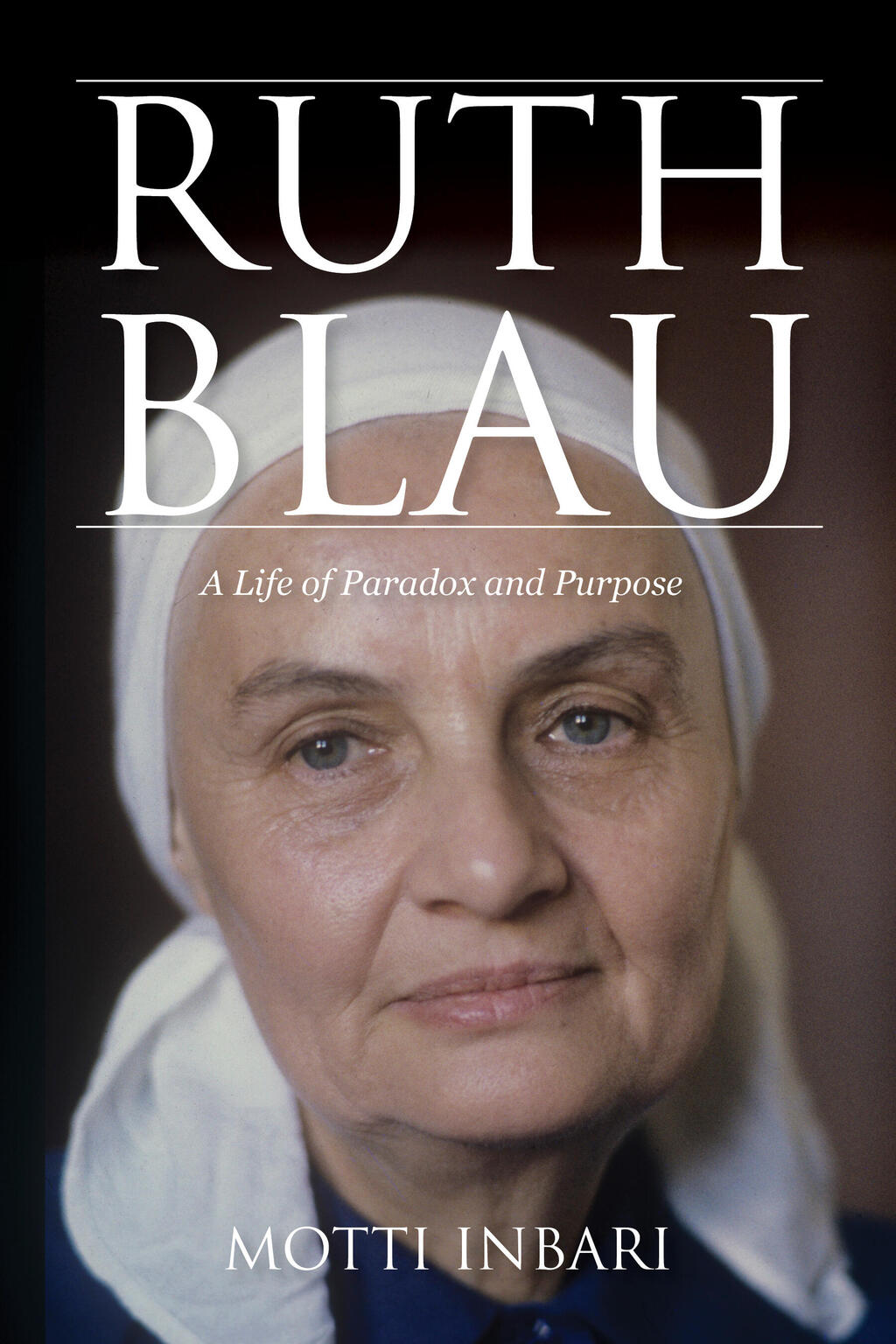Getting your Trinity Audio player ready...
Madeleine Lust Ferraille, Ruth Ben David and Ruth Blau are all the names of the same woman, whose life story has fascinated Jews the world over: a French double agent who found herself in trouble with the law and joined an anarchist Haredi faction – and kidnapped Yossele Schumacher.
Some 60 years on, the affair still has repercussions.
Two separate pieces of research, soon to be published in book form - one by Prof. Motti Inbari, Professor of Jewish Studies at the University of South Carolina at Pembroke, another by Prof. Kimmy Caplan, based at Bar Ilan University - are shedding new light on details about the woman at the center of the Yossele Schumacher affair.
The new research draws a portrait of this extraordinary woman who, in many ways, remains a mystery even after her death.
Prof. Inbari has compiled a new biography about Ruth, soon to be published (Ruth Blau: "A Life of Paradox and Purpose", Indiana University Press), meticulously collating testimonies and documents about this mysterious woman. Earlier this month, he gave a lecture at the 18th World Congress of Jewish Studies at the Hebrew University of Jerusalem.
Years before joining Neturei Karta, an anti-Zionist ultra-Orthodox group, or her involvement with the Mossad and Interpol, Madeleine Lust Ferraille was born an only child in Calais, France to a Catholic French family. She grew up in central Paris. Prof. Inbari explains that "her childhood home faced one of Paris's most famous churches. This - and her Catholic school education - perhaps serve as precursors to her interest in religion in her adult life."
Both Inbari and Caplan claim that the autobiography Ruth Ben David-Blau wrote herself is awash with contradictions. Prof. Kimmy Caplan, expert in Jewish Religious History in the 19th and 20th centuries, has been studying the affair for many years. He claims that autobiographies are rather dubious sources. It's always a "stained memory of the past. A lot of people have simply gone with what she wrote and constructed a story accordingly. That's a mistake."
He describes an assertive and courageous woman. He says that she wrote her autobiography after the Yossele affair, but a tremendous amount of detail seems to have been edited out. Researchers have since gathered this information. "The book was published almost a decade after the affair. By this time, Ruth was an icon, a highly respected rebbetzin - the rabbi's wife - in Neturei Karta. There were elements which would have been incompatible with the persona of a Neturei Karta rebbetzin – and so were omitted from the autobiography.
"Although she was known as Madeleine in the Israeli press, she went by the name Lust. She lived in the center of Paris, adjacent to the Luxembourg Gardens. Her parents didn't get along and there was a lot of tension at home. Over the years, I believe because of her life choices, her relationship with her father became strained."
Prof. Inbari, who researches the history of religion and orthodoxy, claims that Ruth wrote it herself. "I found letters her father had written to her during World War II, highlighting tension between the two. When war broke out, Lust, later known as Ruth, was already a young woman. She left Paris for the south of France. Her mother joined her, essentially separating from Lust's father who remained in Paris. She met her first husband on the Spanish-French border, where her only son, Claude (later Hebraicized to Uriel) was born. She worked as a teacher. The marriage quickly fell apart."
After World War II: Torture and interrogation
This, however, is only one small part of the convert who became a rebbetzin. Inbari travelled to France in search of further material offering an alternative perspective to that presented in her own autobiography. Inbari rummaged through French archival material in to find out more about Ruth's life before her conversion to Judaism.
"The story starts getting interesting in 1944 when she joins the Resistance. She writes that she was part of an underground guerilla movement, without providing further details - for good reason. I found her recruitment papers and French intelligence documents recording her operations. She was recruited to spy on the Gestapo, official secret police of Nazi Germany, aiming at undermining French and Allied forces' underground operations. She managed to win their trust and became an officer in the Gestapo. I think this is why she never talked about it. What Jew wants to hear that Ruth the convert had actually been a Gestapo officer?"
All this is going on while she's married with a small child, whose life essentially in endangered by his mother's actions?
"Indeed. The child was in grave danger. Before joining the Gestapo, she carried out an operation independently rescuing a Jewish woman from certain death in a concentration camp in France. Her file contains documents about this operation. Ruth travelled by train carrying forged documents, went into the concentration camp, announced that there had been a mistake and pulled the woman out of the camp.
“When the war ended, people knew that she had been a Gestapo officer. Anyone who had collaborated with the Nazis was arrested. Ruth was arrested and apparently tortured."
All this time, her son was with his grandmother, Ruth's mother (still known as Madeleine) who very much opposed to Ruth's operations. Prof. Inbari, however, believes that Ruth's character included what he calls "a love of the fear of death." He adds "even after the war, she carried on working with French intelligence. Her identity was exposed in an operation in Morocco, where she was imprisoned for tax evasion."
Inbari adds that "in the Yossele affair, if she hadn't gotten a plea bargain, she'd have sat in jail for a long time. She definitely knew what jail was about and what she was getting herself into. She was constantly striding both sides of the law. These details do not appear in her autobiography."
Parisian bar dancer
Prof. Caplan has written a book about Ruth's most famous partner – Neturei Karta leader, Rabbi Amram Blau. His book about the abduction of Yossele Schumacher will also soon be available. "I believe there to be great discrepancy between what she tells us and what we know. The most influential woman in the Resistance in the south of France, Madame Foucarde, wrote a book about the Resistance's clandestine operations in the region. She includes a list of underground operatives in the area. Madeleine Lust's name isn’t on the list. If, as Ruth claims, she was central to operations, why isn’t her name there?
"It’s still unclear whether she played a minor or major role in operations. Further unanswered questions include the names of government offices she claims to have worked in – offices which have no record of her employment. Maybe things were inflated or exaggerated."
Caplan notes that human memory is a very misleading tool. "When a person looks back on their life, they basically rewrite that life. Things get lost, even unintentionally. It's human nature. For example, although she claims that she was interested in religion in her 20s, there is nothing to suggest this. Working as a dancer in the bars of Paris doesn't show a great deal of interest in religion."
A dancer in Parisian bars?
"Yes, definitely. There are records from the 1940s. The Mossad has testimonies. She was a very beautiful divorcée with a child and she needed to earn a living. This isn’t in her autobiography either."
Breakdown and spiritual remedy
When she was exposed following her adventures during WWII, she was suspended from French intelligence services. Inbari describes what followed as a breakdown of sorts: "She describes not eating or getting out of bed. I'm not a physiatrist, but that's depression. She says that she looked to religion as a cure. She started out with the Seventh Day Adventists (A Christian sect celebrating Shabbat). She then went on to study religion at the Sorbonne University."
Prof. Inbari recounts: "At the Sorbonne, she met an Israeli man studying France Studies, who would eventually become professor of French Literature at the Hebrew University of Jerusalem. He proposed marriage and brought her to Israel. She looked into converting to Judaism. Madeleine decided on a conversion track via the Reform Movement in Paris. The couple parted ways, but she continued on her path to Judaism. Following the conversion, she changed her name to Ruth Ben David, a name laden with symbolism of her conversion."
She didn't stop looking for a match. Inbari explains that she then met an Orthodox rabbi from Alsace, "but remember, she had a Reform conversion, so to find a match, she now went through an Orthodox conversion. This is when she's jailed for tax evasion."
This also fell apart. At the end of the day, the rabbi's community, uncomfortable with her background and conversion, did not accept her. Ruth faced a recurring theme of not striking a shidduch (marriage match) on grounds of her being a convert."
Inbari explains that Ruth soldiered on into Orthodox Judaism, eventually making Aliyah to a Hassidic community.
"Her son's life was also shaken up. At first, he was an 'external child' at the religious 'Kvutzat Yavneh.' She removed him from there and enrolled him in an extremist yeshiva in Switzerland. He returned to Israel in the 1960s to the Haredi, yet relatively open yeshiva, Be'er Yaakov. It's definitely not Neturei Karta."
An invitation to join the Mossad
When Ruth left Israel, Claude-Uriel asked her to return to find a marriage partner. "For years on end, she endures being a divorced convert. Then, comes the Yossele Schumacher affair."
The Yossele Schumacher story begins in the 1960s, when the boy’s family make Aliyah from the Soviet Union: grandparents, children and grandchildren. Nahman, the grandfather, was a Breslav Hassid living in Uman, Ukraine. Despite the Communist rule, characterized by atheism, the family managed to keep up religious practices – and the grandfather was sent to Siberia where his health deteriorated and he lost his eyesight.
The family, however, retained its conservative Orthodox lifestyle. But, one of the daughters removed one of her two sons from an Orthodox yeshiva in Mea Shearim in Jerusalem, placing him in a nationalist-religious school. The grandfather regarded this as a "shemed" (a forced conversion out of Judaism) and decided to abduct his own grandson.
Prof. Inbari says that Ruth enters the picture as the boy is transferred to the custodianship of Neturei Karta. "Ruth's rabbi called on her to help smuggle the boy out of the country. Using an old passport son's passport, Claude-Uriel becomes Claudine. They took a picture of Yossele dressed as a girl and switched the pictures. This is how Yossele was smuggled out of Israel to Europe and onto the United States."
Inbari believes that Ruth being approached by a religious figure was what made her agree to do it. "After nearly two years of unsuccessful searches, the Mossad entered the picture. They managed to connect Ruth to the affair, abduct Ruth in France and interrogate her. They also interrogated her son Claude-Uriel, who told the Mossad everything, confessing to the abduction. In exchange for immunity for herself and her son, Ruth also confessed, admitting guilt and giving the Mossad Yossele's location in New York."
At what stage does the Mossad recruit her?
Inbari laughs: "We don't have access to Mossad documents, but what I found suggests that this followed the Yossele affair. The Mossad suggested she join their ranks – which, as an anti-Zionist Haredi - she completely rejected. Issar Harel hints at this in his book. She mentions this offer in her book, but it seems rather vague. It's also important to understand that agents often lay dormant for extended periods. I wouldn't rule out her continued role with French intelligence."
Prof. Kimmy Caplan points out: "For two and a half years, Ruth's impressive skills in abducting Yossele had the whole country on its feet – the Israeli police, Interpol. This gained their respect and admiration."
Did she emerge unscathed?
"Yes, that was the deal. But she didn't come out completely clean. In France, she was judged and sentenced for kidnapping and illegally transporting a child. The other parties involved also paid no price – apart from Yossele's uncle. Then-Prime Minister David Ben-Gurion decided to close the affair as quickly as possible."
The shidduch that tore apart Neturei Karta
The end of the Yossele affair was the beginning of a new, no less tumultuous one - Ruth's marriage to Neturei Karta's then-spiritual leader, Rabbi Amram Blau. After two years in France, Ruth arrived in Mea Shearim. Rabbi Amram Blau was widowed only two months earlier. "He saw her and decided he wanted to marry her – which led to great scandal."
Inbari explains: "The entire community in Mea Shearim, including his own children, was vehemently opposed to the match. I assume the children were taken aback by the short time-lapse following their mother's death. They also didn't like the woman chosen to replace her – a convert. Great turmoil erupted." Prof. Inbari adds that in addition to the rabbi's children, was a shadchan (matchmaker) already counting his fee for matching her up with a different rabbi."
Politics lay beneath all of this. "My hypothesis is that this was in fact a power struggle within Neturei Karta. Rabbi Amram had a lot of enemies with conflicting interests. He liked stirring things up, but they had further interests, including kashrut certifications. They were concerned that Rabbi Amram’s scathing remarks about Agudat Israel and Haredim, who were engaged in Israeli politics, would cause Neturei Karta to be ostracized, that a 'herem' would be declared against them. They were afraid that Amram would torpedo the Jerusalem City Hall budget to refurbish Haredi public buildings. Amram opposed it, because it didn't interest him."
Rabbi Amram and his wife are long gone, but the ongoing demonstrations along Jerusalem's light rail route are a stark reminder that the extremist element within Neturei Karta is still here and is ready to riot. Inbari believes that "people are wrong about conflating the Haredi community and Neturei Karta. They're not the same thing. Neturei Karta is a modern, combatant faction that they can't control. The Haredi leadership saw Rabbi Amram's marriage as an opportunity to rid themselves of him. They held wild demonstrations, demanding he revoke the engagement.
"Amram fought for his right to marry Ruth. The compromise was that they would marry and would be 'exiled' to Bnei Brak. I think that the plan all along was to weaken Rabbi Amram and to sow division within Neturei Karta, which indeed does become a weakened, divided organization."
What would a French convert find in Neturei Karta?
"She did a great deal. She raised funds, dealt with public relations and advised Rabbi Amram. From their correspondence, we learn how she offered him advice and ideas, how to behave, to whom to turn. She also encouraged him to carry on fighting for the legitimacy and acceptance of their marriage, and became a matchmaker herself."
Rebbetzin who met Khomeini
Prof. Inbari points out that although women are not in decision-making positions in the Hassidic world, the rebbetzin holds a special role. "Ruth Blau was no different in this respect."
And what about children?
"This is that hard part. The couple had a 26-year age gap. She was still of childbearing age, but Rabbi Amram had fertility problems, the source of battles at home. She wanted more children. He didn't. He wouldn't agree to treatment of his fertility issues. It looks like he didn't really want to have children with her. She even left him, taking off to France."
In his book about Rabbi Amram Blau, Prof. Caplan points out that the rabbi's inability to father children was already known and was even, when facing Badatz rabbis, used as a premise for marrying a convert, whereby there would be no "stained" children produced by the union, corrupting the family tree. We don't know how much Ruth knew about all of this.
Prof. Inbari believes that this failure transformed Ruth into a humanitarian success story.
"She brands herself as a representative for rescuing Jews through visits in Lebanon and Iran. She even met former Supreme Leader of Iran Ruhollah Khomeini and Palestinian resistance representatives in Lebanon. She continued her role as diplomatic rebbetzin. On a fundraising trip to London, aged 78, she suffered a stroke. She died two years later, outliving her husband by 25 years.


